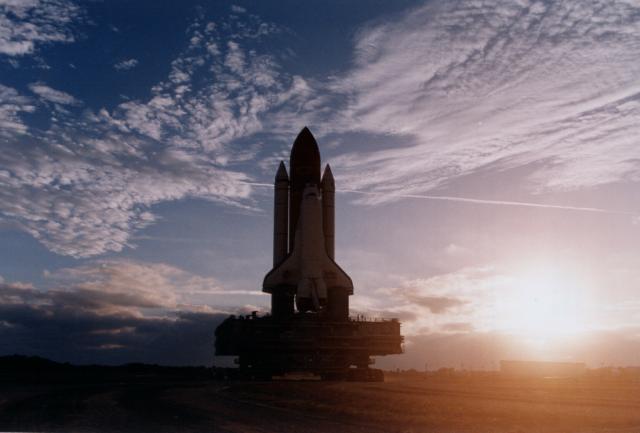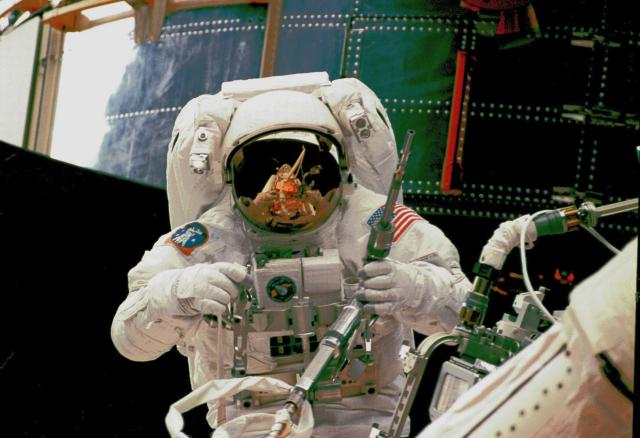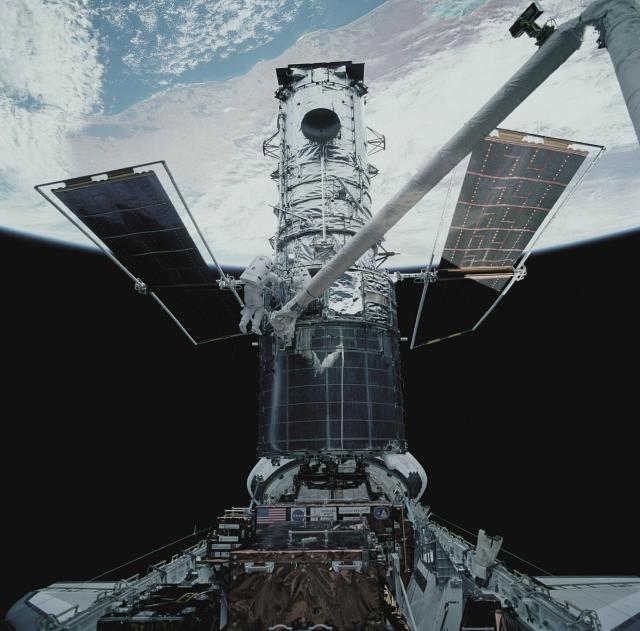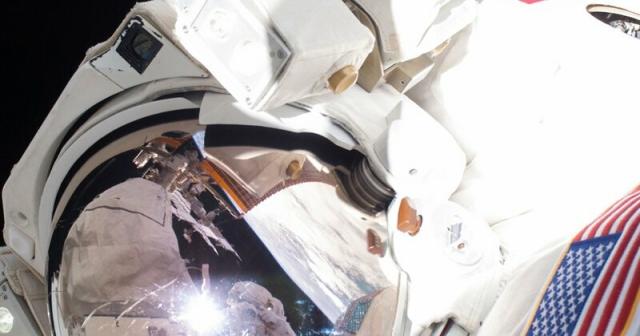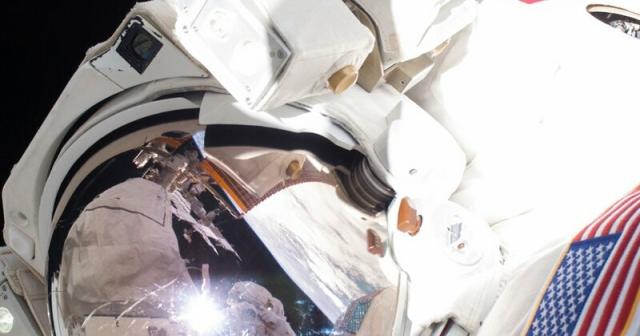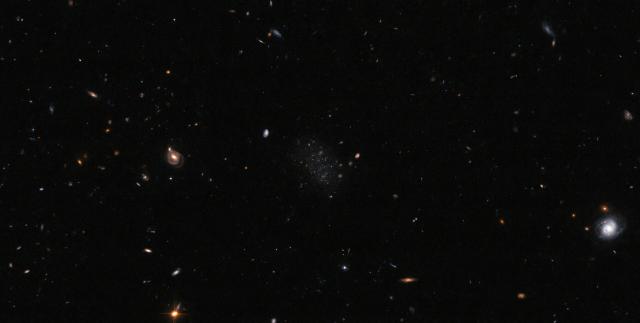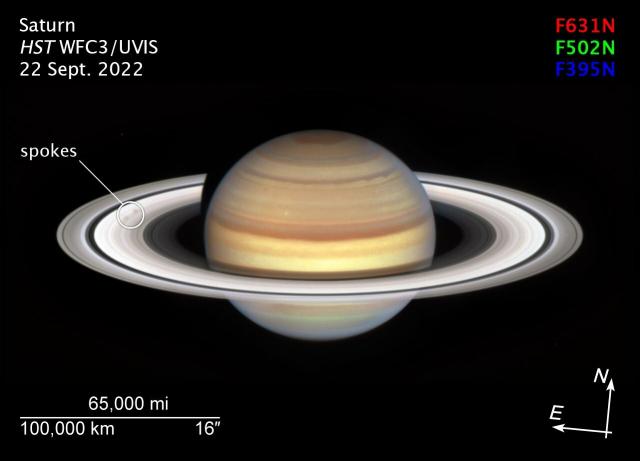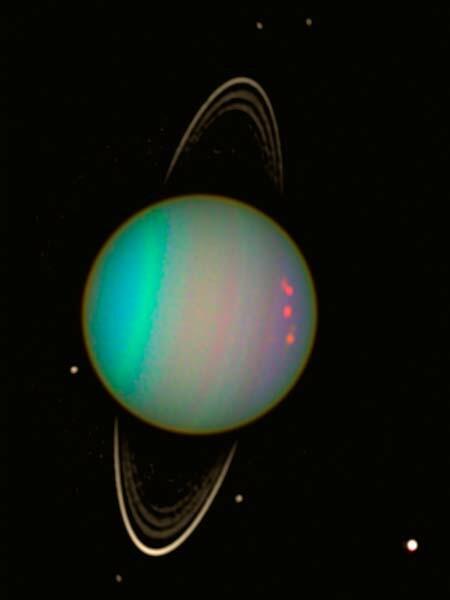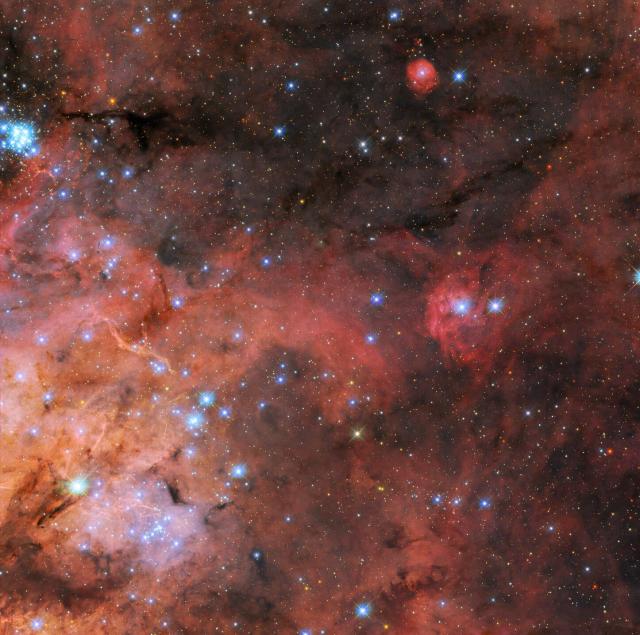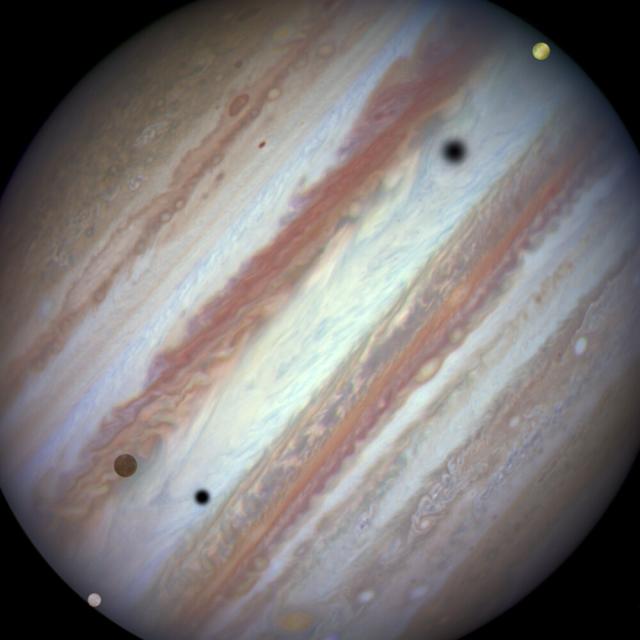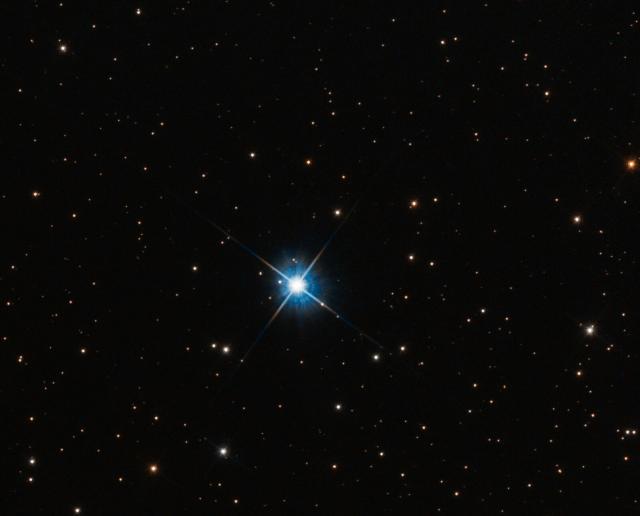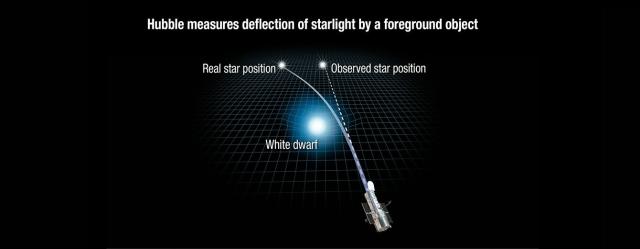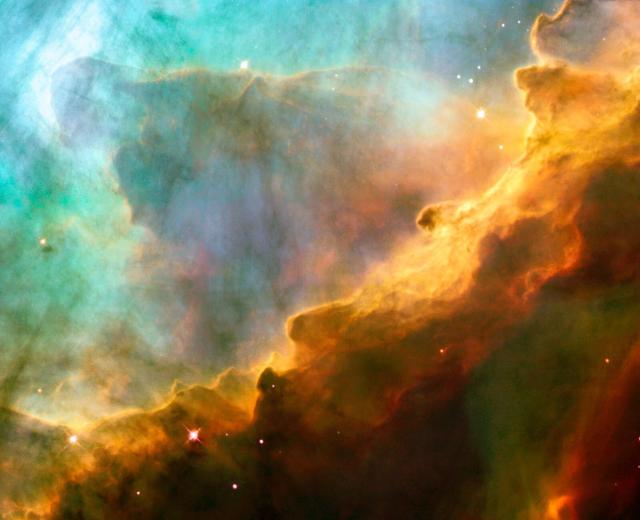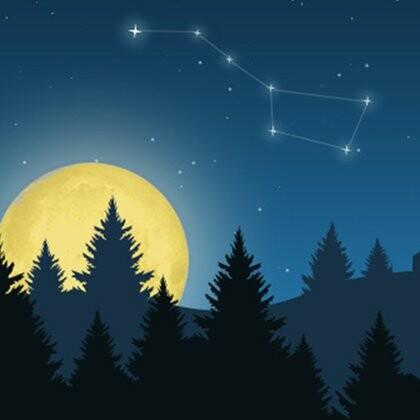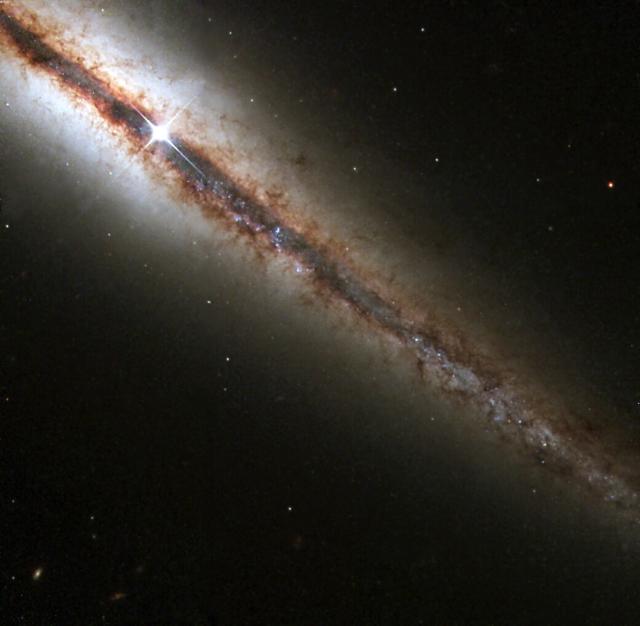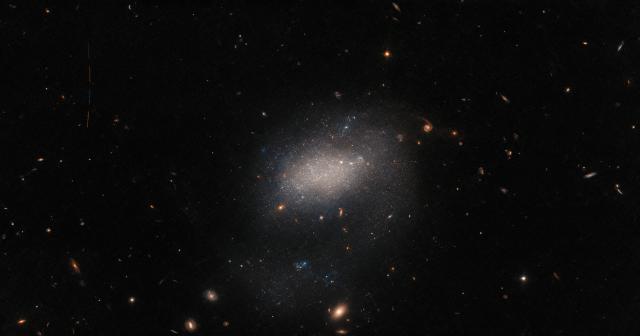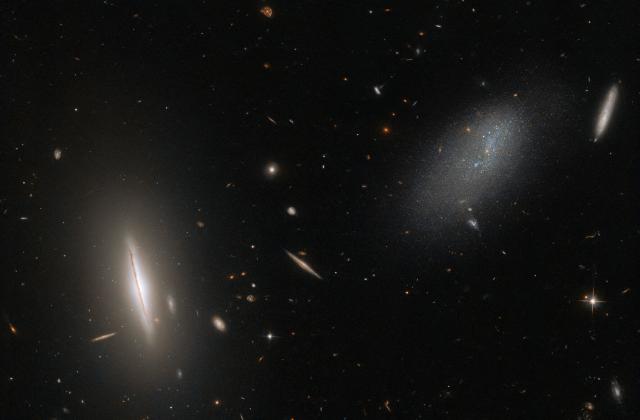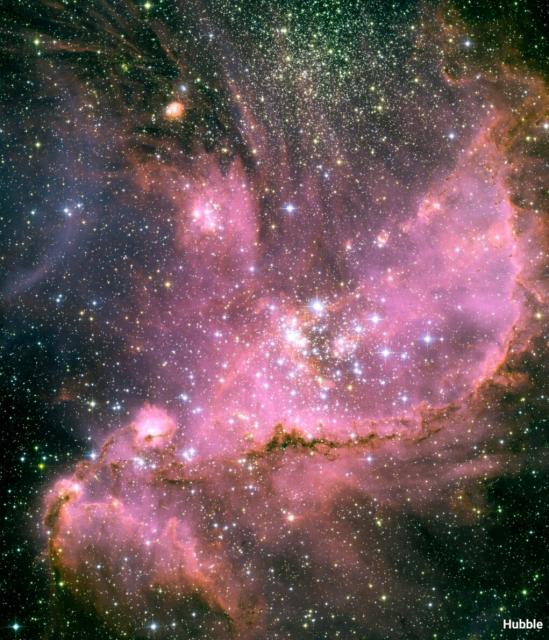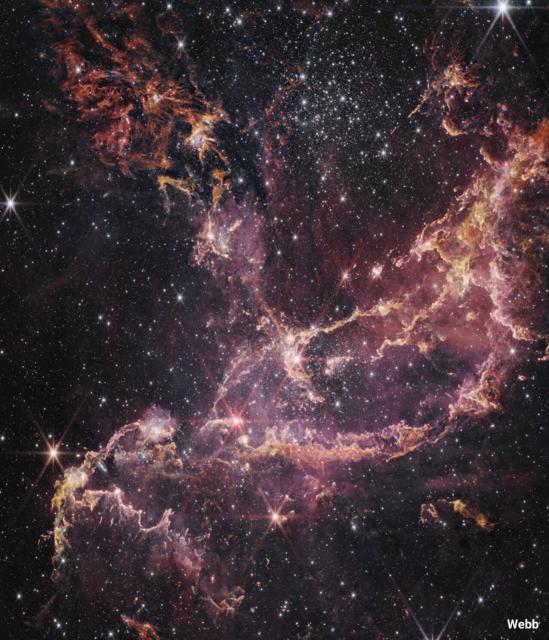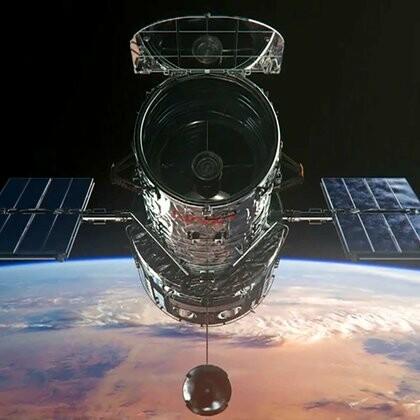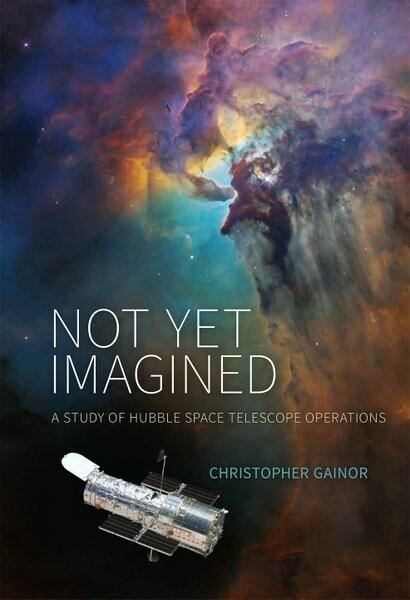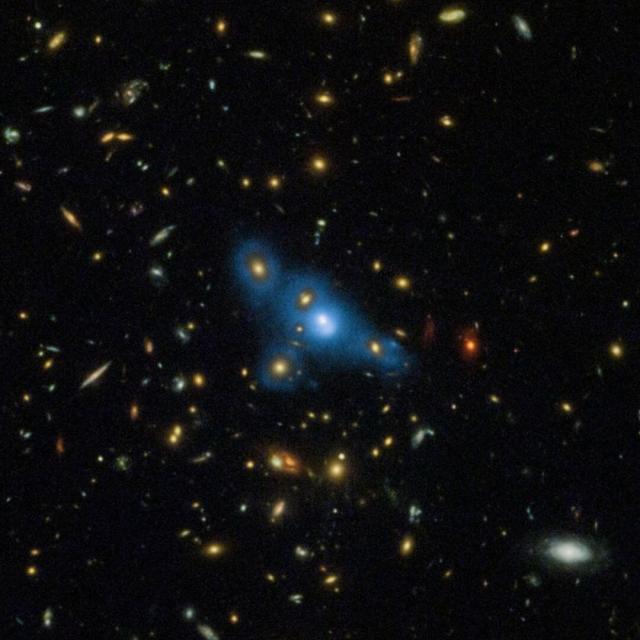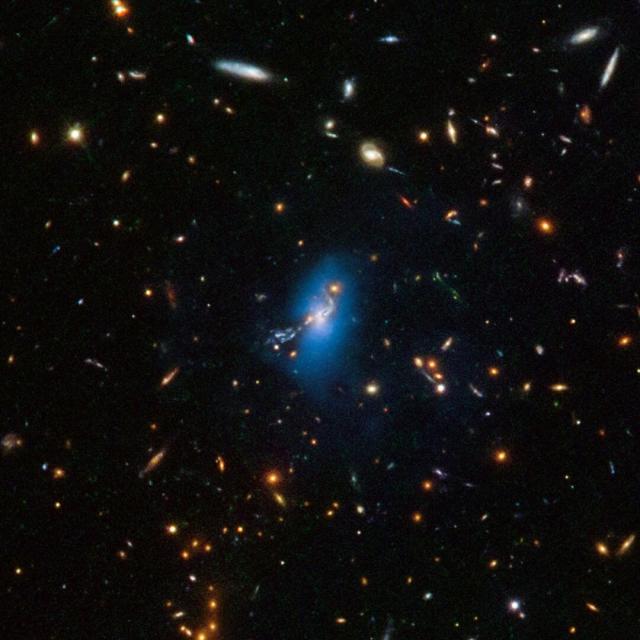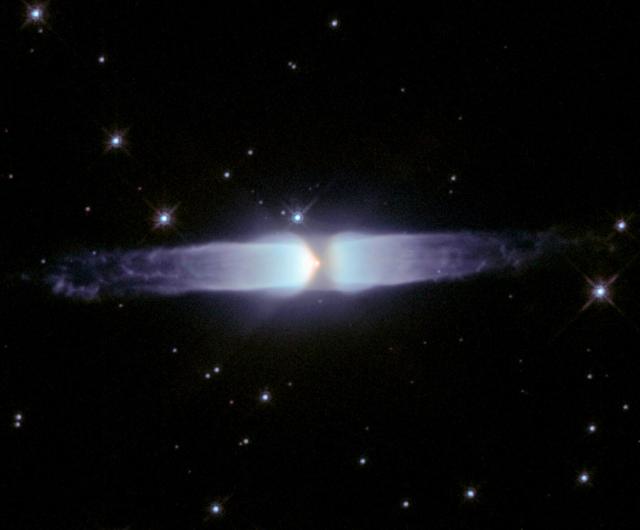Search
Items tagged with: hubble
Curious Universe is back! 🎧
The next season of NASA's podcast takes listeners on wild adventures through our solar system, galaxy, and beyond.
Tune in every Tuesday starting February 21: nasa.gov/curiousuniverse
#Hubble
NASA's Curious Universe
NASA.gov brings you the latest images, videos and news from America's space agency. Get the latest updates on NASA missions, watch NASA TV live, and learn about our quest to reveal the unknown and benefit all humankind.NASA
Happy #ValentinesDay from Venus – the planet named for the goddess of love! 💖
Hubble captured this image in ultraviolet light back in 1995. Venus is the hottest planet in our solar system, with surface temperatures at about 900 degrees Fahrenheit! More: go.nasa.gov/3E7r36j
#Hubble
Venus Cloud Tops Viewed by Hubble | NASA Solar System Exploration
Hubble Space Telescope ultraviolet-light image of Venus.NASA Solar System Exploration
The Hubble Traveling Exhibit is now open at the INFINITY Science Center in Pearlington, Mississippi – marking the exhibit's 41st stop!
Featuring cosmic images and astronaut tools, the exhibit immerses visitors in the magnificence of the Hubble mission: go.nasa.gov/3jW1GgU
#Hubble
At the Museum - About the Hubble Traveling Exhibit
NASA.gov brings you the latest images, videos and news from America's space agency. Get the latest updates on NASA missions, watch NASA TV live, and learn about our quest to reveal the unknown and benefit all humankind.NASA
Today marks the 26th anniversary of the second servicing mission up to the Hubble Space Telescope!
The SM2 astronaut crew greatly improved Hubble’s productivity by installing new scientific instruments and replacing degraded spacecraft components: go.nasa.gov/3jJ21Ua
#Hubble
About - Hubble Servicing Missions | SM2
NASA.gov brings you the latest images, videos and news from America's space agency. Get the latest updates on NASA missions, watch NASA TV live, and learn about our quest to reveal the unknown and benefit all humankind.NASA
Welcome to your digital Hubble science toolkit!
To celebrate #InternationalDayofWomenAndGirlsInScience, explore this thread to find online resources about Hubble, astronomy, and careers at @nasa. 👩🚀 ⬇️
#Hubble
Whether you're into podcasts or books, we've got a full digital library of content where you can learn more about our universe.
Dive deeper into the science behind Hubble's discoveries!
Digital Library
NASA.gov brings you the latest images, videos and news from America's space agency. Get the latest updates on NASA missions, watch NASA TV live, and learn about our quest to reveal the unknown and benefit all humankind.NASA
Do you want to work on a mission like Hubble? Learn about some of our team's scientists, and find out about all the different types of careers that make up NASA.
Hubble Inspires | Career Aspirations
NASA.gov brings you the latest images, videos and news from America's space agency. Get the latest updates on NASA missions, watch NASA TV live, and learn about our quest to reveal the unknown and benefit all humankind.NASA
Game on!
Expand your cosmic horizons with Hubble's interactive online activities. We've got games, trivia, videos, and more!
Hubble Inspires | Online Activities
NASA.gov brings you the latest images, videos and news from America's space agency. Get the latest updates on NASA missions, watch NASA TV live, and learn about our quest to reveal the unknown and benefit all humankind.NASA
Hubble has completely changed astronomy with its revolutionary discoveries.
Uncover some of Hubble's most groundbreaking science, and learn more about the different types of cosmic objects that make up our universe.
Discoveries
NASA.gov brings you the latest images, videos and news from America's space agency. Get the latest updates on NASA missions, watch NASA TV live, and learn about our quest to reveal the unknown and benefit all humankind.NASA
In the very middle of this #HubbleFriday image is a galaxy... but you might have to look very closely to find it.
The newly discovered dwarf galaxy Donatiello II is seen nestled among a smattering of distant stars and even more distant galaxies: go.nasa.gov/3DUC4bb
#Hubble
Hubble Spots an Elusive Galaxy
Right in the middle of this image taken with the NASA/ESA Hubble Space Telescope lies the newly discovered dwarf galaxy known as Donatiello II.Andrea Gianopoulos (NASA)
“Ring” in the start of a new spokes season!
On the planet Saturn, spokes are suspected to be caused by the interaction between the planet’s magnetic field and solar wind.
You can see two smudgy spokes on the rings on the left side of this new image: go.nasa.gov/3xcbdn2
#Hubble
Hubble Captures the Start of a New Spoke Season at Saturn
New images of Saturn from NASA's Hubble Space Telescope herald the start of the planet's "spoke season" surrounding its equinox, when enigmatic features appear across its rings.Andrea Gianopoulos (NASA)
It’s spokes season!
On Saturn, mysterious “spokes” appear on its rings near the planet’s seasonal equinoxes.
Scientists suspect they are caused by Saturn’s magnetic field interacting with solar wind from the Sun, but this hypothesis is unconfirmed: go.nasa.gov/3RN8SZd
#Hubble
Hubble Captures the Start of a New Spoke Season at Saturn
New images of Saturn from NASA's Hubble Space Telescope herald the start of the planet's "spoke season" surrounding its equinox, when enigmatic features appear across its rings.Andrea Gianopoulos (NASA)
Can you spot six of Uranus’s moons in this picture? Look closely 🔍
This #HubbleClassic image shows Uranus’ faint rings and some of its moons.
The bright spot in the lower right is Ariel, which has the brightest surface of all of the planet's moons: go.nasa.gov/3IaxU1y
#Hubble
Welcome to a "star factory"!
This #HubbleFriday view shows the Tarantula Nebula, the brightest region of starbirth in our galactic neighborhood.
About 161,000 light-years away, it's within the Large Magellanic Cloud – a satellite galaxy to our Milky Way: go.nasa.gov/3RsBMOh
#Hubble
Hubble’s New View of the Tarantula Nebula
A snapshot of the Tarantula Nebula (also known as 30 Doradus) is featured in this image from the NASA/ESA Hubble Space Telescope.Andrea Gianopoulos (NASA)
Happy #GroundhogDay!
Punxsutawney Phil saw his shadow this morning... and from up in space, Hubble can see shadows too!
This image shows three of Jupiter’s dozens of moons – and two of their shadows – moving across the planet in 2015: go.nasa.gov/3HTQJWg
#Hubble
With Hubble, astronomers measured the mass of a single, isolated white dwarf – which is the surviving core of a burned-out star.
The white dwarf, called LAWD 37, is 56% the mass of our Sun: go.nasa.gov/3l31XyZ
More ⬇️
#Hubble
For the First Time Hubble Directly Measures Mass of a Lone White Dwarf
Astronomers using NASA's Hubble Space Telescope have for the first time directly measured the mass of a single, isolated white dwarf.Andrea Gianopoulos (NASA)
Astronomers were able to determine this using “gravitational microlensing” – when the gravity of a foreground object warps the light coming from an object behind it.
The light from a background star was slightly deflected by the gravitational warping of space by LAWD 37.
#Hubble
Meet Phathom Donald, a satellite systems engineer on the Hubble mission. She followed her passion for the stars, and now gets to help maintain and command a spacecraft!
Read more about her journey to Hubble: go.nasa.gov/3JvoPkP
#Hubble

Phathom Donald Brings Space Closer as a Hubble Mission Engineer
Phathom Donald brings calmness and curiosity to the Hubble Space Telescope’s flight operations team.Jessica Evans (NASA)
The cosmic ocean 🌊
This #HubbleClassic image shows a sea of glowing hydrogen gas, along with small amounts of other elements such as oxygen and sulfur.
Known as M17 (or the Swan or Omega Nebula), this starforming region resides 5,500 light-years away: go.nasa.gov/3ReWzVr
#Hubble
⏪ #FlashbackFriday to Hubble’s observations of Comet ISON in April 2013!
Even without a space-based observatory to help, this comet became visible with the naked eye too!
Read more: go.nasa.gov/3Y201oB
#Hubble
Another comet viewing opportunity is here: C/2022 E3 (ZTF) can be seen with binoculars or a small telescope in the predawn sky as the comet travels across the northern sky.
Check your favorite skywatching app for the comet's position and more info! go.nasa.gov/3Y27Dax
#Hubble
What’s Up: Skywatching Tips from NASA
Watch the latest video in NASA’s “What’s Up” series to discover the skywatching highlights for this month.NASA Solar System Exploration
Have a stellar #HubbleFriday!
This week's image shows the bright star V 372 Orionis, along with a smaller companion star in the upper left.
Both stars call the Orion Nebula home – which is a massive region of starbirth about 1,450 light-years away: go.nasa.gov/3DkX6zq
#Hubble
Hubble Views a Stellar Duo in Orion Nebula
The bright variable star V 372 Orionis takes center stage in this image from the NASA/ESA Hubble Space Telescope.Andrea Gianopoulos (NASA)
Ever wonder what Hubble saw on your birthday?
Here’s what Hubble captured #OTD in 2000 – the galaxy NGC 4013, seen edge-on from 55 million light-years away!
Find your image: go.nasa.gov/3WwqARC
#Hubble
What Did Hubble See on Your Birthday?
NASA.gov brings you the latest images, videos and news from America's space agency. Get the latest updates on NASA missions, watch NASA TV live, and learn about our quest to reveal the unknown and benefit all humankind.NASA
Galaxies galore!
This #HubbleClassic image shows Abell 1689, which is one of the most massive clusters of galaxies known to exist.
Abell 1689 is made up of so much matter that it warps light traveling to us from objects located behind the galaxy cluster: go.nasa.gov/3j1NTFe
#Hubble
A cosmic treasure trove! 🤩
This #HubbleFriday contains lots of astronomical marvels: the hazy galaxy UGC 7983, more distant galaxies, and even an asteroid, seen as four streaks of light on the upper left (from four exposures taken by Hubble).
For more: go.nasa.gov/3ZNEMZp
#Hubble
Hubble Captures Cosmic Treasure Trove
A host of astronomical objects are scattered across this image from the NASA/ESA Hubble Space Telescope. Background galaxies ranging from stately spirals to fuzzy ellipticals are strewn across the image.Andrea Gianopoulos (NASA)
This nebula’s weather forecast? 200,000 degrees Celsius! 🔥
That’s the surface temperature of the dying star at the center of the nebula NGC 2440.
It’s shedding outer layers of material to create the complex structure seen in this #HubbleClassic image: go.nasa.gov/3HcVbzo
#Hubble
Happy #HubbleFriday!
This week's image shows a galactic gathering. On the right, the faint, sparse galaxy LEDA 48062 shines from 30 million light-years away. On the left is a more sharply defined galaxy called UGC 8603: go.nasa.gov/3XaJ9ff
#Hubble
Hubble Visits Galactic Neighbors
This image from the NASA/ESA Hubble Space Telescope features the galaxy LEDA 48062 in the constellation Perseus.Andrea Gianopoulos (NASA)
News from #AAS241!
Hubble recorded a star's final moments as it was ripped apart and eaten up by a black hole – getting twisted into a donut-like shape in the process.
Find out more: go.nasa.gov/3W8wBDY
#Hubble
Hubble Finds Hungry Black Hole Twisting Captured Star Into Donut Shape
Astronomers using NASA's Hubble Space Telescope have recorded a star's final moments in detail as it gets gobbled up by a black hole.Andrea Gianopoulos (NASA)
Stars across the spectrum! ⭐
These two views of NGC 346 show a dynamic, massive star-forming region in the Small Magellanic Cloud, which is a satellite galaxy to our own Milky Way.
What's going on in NGC 346?
#Hubble
#Hubble
The Hubble view (above on the left) shows NGC 346 in visible and near-infrared light. Outflows and radiation from young stars are wearing away at the denser outer portions of the region!
M81 is one of the brightest galaxies in the night sky!
Seen in this #HubbleClassic view, M81 resides about 11.6 million light-years away. It's home to a black hole about 15 times the mass of our Milky Way Galaxy’s central black hole!
Read more: go.nasa.gov/3itnPTe
#Hubble

Messier 81
Discovered by the German astronomer Johann Elert Bode in 1774, M81 is one of the brightest galaxies in the night sky.Rob Garner (NASA)
Hoping to read more books in 2023? Get started with the Hubble history book “Not Yet Imagined"!
1) Get a free e-book: go.nasa.gov/3ZlQgTx
2) Or if you're at #AAS241, swing by the @nasa Booth from 7:30-8:30 p.m. on Jan. 8 or 10-11 a.m. on Jan. 9 to get a signed copy!
#Hubble
Not Yet Imagined
Not Yet Imagined documents the history of the Hubble Space Telescope from its launch through its first 30 years of operation in space.Michele Ostovar (NASA)
Welcome to the first #HubbleFriday of 2023!
This image features the star cluster NGC 6355, which resides within our own Milky Way Galaxy at a distance of about 50,000 light-years.
Read more: go.nasa.gov/3X5SSmw
#Hubble
Hubble Gazes at Colorful Cluster of Scattered Stars
The scattered stars of the globular cluster NGC 6355 are strewn across this image from the NASA/ESA Hubble Space Telescope.Andrea Gianopoulos (NASA)
It's #TriviaDay!
Put your Hubble knowledge to the test with our short Q&A videos.
Ready? Let's go: go.nasa.gov/3Zc2v4W
#Hubble
Explore - Hubble Trivia
NASA.gov brings you the latest images, videos and news from America's space agency. Get the latest updates on NASA missions, watch NASA TV live, and learn about our quest to reveal the unknown and benefit all humankind.NASA
Within galaxy clusters, some stars lurk among the galaxies on their own, giving off a ghostly haze of light.
Billions of years ago these stars were shed from their parent galaxies and now drift through intergalactic space: go.nasa.gov/3XmFNpp
#Hubble
Hubble: Ghost Light Among Galaxies Stretches Far Back In Time
In giant clusters of hundreds or thousands of galaxies, innumerable stars wander among the galaxies like lost souls, emitting a ghostly haze of light.Andrea Gianopoulos (NASA)
Today’s #HubbleClassic brings us back to the 90s!
This Hubble image taken in 1997 shows the young planetary nebula Henize 3-401, one of the longest planetary nebulae ever discovered.
A central star glows in the center of two oblong outflows of gas: go.nasa.gov/3i31yLH
#Hubble


